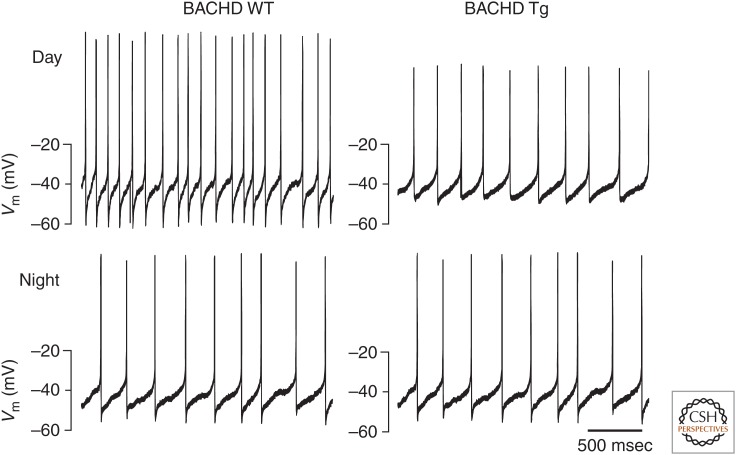Figure 3.
Suprachiasmatic nucleus (SCN) neuronal activity in a mouse model of Huntington’s disease. The spontaneous action potential firing frequency is reduced in the SCN of mice expressing the entire human huntingtin gene (HTT) with 97 mixed CAA-CAG repeats (BACHD). The current-clamp recording technique was used in the cell-attached configuration to record the spontaneous firing rate (SFR) of dorsal SCN neurons during the day (ZT4-6, top row) and night (ZT16-18, bottom row). The reduced excitability of SCN neurons in the BACHD mice are consistent with the hypothesis that reduced circadian output signals from the SCN contribute to the phenotypes observed in the BACHD mice.

